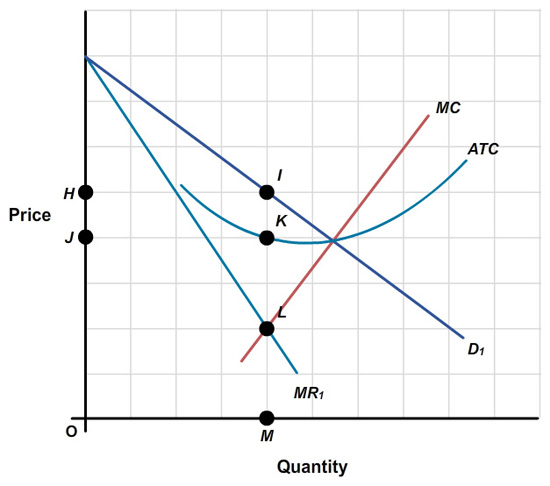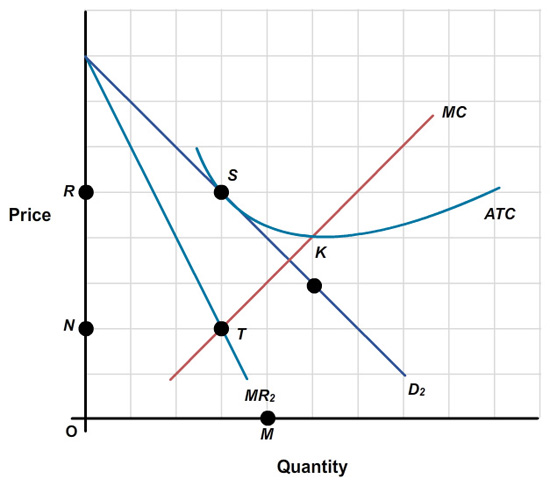Solved Problems
Chapter 10b
TABLE OF CONTENTS
Question 1 of 6
Step 1
Solved Problems
true
true
You must read each slide, and complete any questions on the slide, in sequence.
The following curves are for a monopolistically competitive firm. The marginal cost (MC) curve, marginal revenue (MR1) curve, and demand (D1) curve corresponding to each level of output (Q) and price (P) are shown in the graph below.

In the short run, the firm follows the formula and it earn a profit.
3
In the short run, monopolistically competitive firms behave like monopolists. They follow the monopolist’s pricing decision and can earn profits before competition enters.
Step 2

Revenue is represented by the rectangle .
3
Revenue equals P x Q. If MR = MC at point L, the corresponding price is I and Quantity is at point M. The rectangle represented by this has a base of OH and a height of IM, so the rectangle is bounded by HIMO.
Step 3

Total costs are represented by the rectangle .
3
Since ATC = Total Cost / Quantity, then TC = ATC x Q. Costs are therefore the area below the ATC curve where MR = MC. This is point K. M, O, and J are the other corners.
Step 4

Profit is represented by the rectangle .
3
Profit is the difference between revenue and costs. The part of the revenue rectangle that exceeds total costs is bounded by HIKJ.
Step 5

In the long run, the price per unit of output for the firm equals and it earn a profit.
3
In the long run, new firms enter until each firm operates at zero profit. This reduces demand for the individual firm. These firms must operate at P = ATC; if price falls below ATC, they will lose money.
Step 6

Profit is .
3
Profit is eliminated by the entrance of new firms.